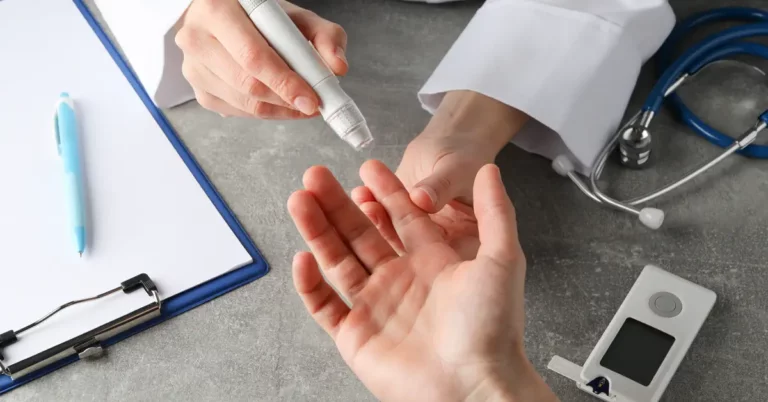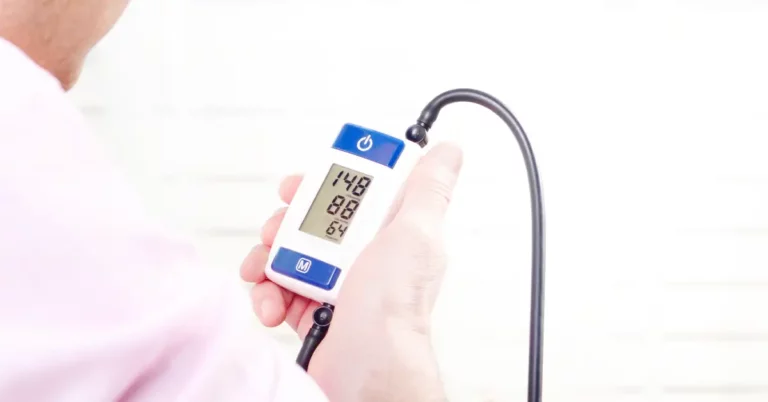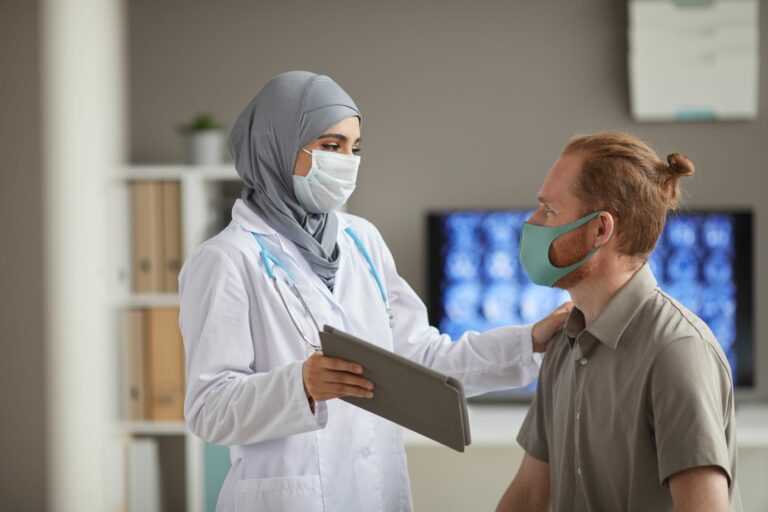The purpose of this guide is to provide information and resources on remote monitoring for the elderly. Remote monitoring has become an increasingly important tool in the field of elderly care, allowing caregivers to monitor the well-being of their elderly loved ones from a remote location. With advanced technology, elderly monitoring systems provide peace of mind and ensure seniors receive the care they need, even when a caregiver is absent.
Key terms used in the guide:
- Monitoring: observing, tracking, or recording something to gain information about it.
- Elderly: people who are in their old age.
- Monitoring system: a set of tools and technologies used to monitor a specific thing or person.
- Home: a place where someone lives.
- Senior: a person who is elderly.
- Remote: located far away or apart in space or time.
- Remote monitoring: monitoring something or someone from a remote location.
- Caregiver: a person who provides care to someone who needs help with daily activities.
Remote monitoring for the elderly involves the use of monitoring systems and devices to track and monitor the well-being of elderly individuals in their homes. Caregivers can access these systems remotely, allowing them to receive updates and alerts on their loved one’s health and safety, even when they are not physically present.
Remote monitoring for the elderly has become an essential tool in elderly care. The latest research reports the usefulness and adherence to integrated, real-time monitoring and management by elderly people with and without a chronic health condition over an extended time. It provides peace of mind for caregivers who may not be able to be with their elderly loved ones at all times physically. It also ensures that seniors receive the care they need, even in an emergency, thanks to monitoring devices such as wearable pendants or emergency buttons.
What is Remote Monitoring for the Elderly?
Remote monitoring for the elderly is a system that allows elderly individuals to be monitored remotely, typically from their home environment. The main goal of remote monitoring is to provide peace of mind to both the elderly individual and their loved ones and ensure the individual’s health and safety. There are several different types of remote monitoring systems for the elderly, including wearable devices, innovative home systems, and telehealth devices. The key components of remote monitoring systems for the elderly typically include sensors and monitoring devices, a hub that collects data from the sensors, and an interface for accessing and reviewing the data, such as a mobile app or website. Remote monitoring systems use sensors to track various aspects of the elderly individual’s health and environment, such as their movements, vital signs, and changes in their living environment. The data collected by the sensors is then transmitted to the hub and analyzed to determine if any actions need to be taken, such as alerting a caregiver or medical professional if an emergency is detected.
Benefits of Remote Monitoring for the Elderly
Remote monitoring for the elderly offers numerous benefits, which can help ensure peace of mind, safety, and independence for elderly individuals and their caregivers. Some of the key benefits of remote monitoring include the following:
- Peace of mind and safety: Remote monitoring systems can help ensure that elderly individuals are safe and healthy, even when living independently. By monitoring vital signs, movements, and changes in the environment, remote monitoring systems can detect potential emergencies and alert caregivers or medical professionals if necessary. This can help prevent accidents and ensure that elderly individuals receive prompt attention in an emergency.
- Independence: Remote monitoring systems can help elderly individuals maintain their independence by allowing them to live in their homes for longer. By providing caregivers with real-time information about the individual’s health and well-being, remote monitoring systems can help ensure that elderly individuals receive prompt care when needed, which can help them avoid having to move into assisted living facilities.
- Caregiver support: Remote monitoring systems can help caregivers ensure that their loved ones are safe and healthy by providing real-time updates on the individual’s condition. This can help alleviate the stress and worry that many caregivers experience when trying to ensure the well-being of their elderly loved ones. By having access to real-time information, caregivers can make informed decisions about the individual’s care and take proactive steps to ensure their safety.
- Detecting and preventing emergencies: Remote monitoring systems can help detect and prevent emergencies by monitoring the elderly’s vital signs and movements. By detecting changes in the individual’s condition, remote monitoring systems can alert caregivers or medical professionals if an emergency is detected. This can help prevent accidents and ensure that elderly individuals receive prompt care.
- Cost-effective: Remote monitoring systems are typically more cost-effective than traditional in-home care, as they do not require a caregiver to be in the home 24/7. This can save families and elderly individuals money and give them more control over their care.
In conclusion, remote monitoring for the elderly offers numerous benefits, including peace of mind, safety, independence, caregiver support, and cost savings. By providing real-time information about the elderly individual’s health and well-being, remote monitoring systems can help ensure that elderly individuals receive prompt care and help prevent emergencies.
Choosing the Right Remote Monitoring System for Your Elderly Loved Ones
Choosing the right remote monitoring system for your elderly loved one is an important decision that can greatly impact their safety, independence, and peace of mind. When choosing a remote monitoring system, there are several key factors to consider, including:
- Types of monitoring devices and sensors: Different remote monitoring systems use different monitoring devices and sensors to track various aspects of the elderly individual’s health and environment. Some common monitoring devices include wearable devices, smart home systems, and telehealth devices. Choosing a remote monitoring system that provides sensors appropriate for the individual’s needs and preferences is essential.
- Two-way communication: Two-way communication is an essential aspect of remote monitoring systems, as it allows elderly individuals and their caregivers to communicate with each other in real time. This can be particularly important in emergencies, as it allows caregivers to provide prompt assistance.
- Features: Different remote monitoring systems offer different features, including real-time monitoring, alerts and notifications, and remote access to data and information. Choosing a remote monitoring system that provides appropriate components to the individual’s needs and preferences is essential.
- Wearable devices and emergency pendants: Wearable devices and emergency pendants can be a valuable addition to remote monitoring systems, as they allow elderly individuals to carry a monitoring device with them at all times. In an emergency, the individual can quickly activate the emergency pendant to alert caregivers or medical professionals.
- Cost: Remote monitoring systems can vary greatly in cost, and choosing a system that fits your budget is significant. It is essential to consider not only the initial cost of the system but also the ongoing costs of monitoring and maintenance.
When choosing a remote monitoring system for your elderly loved one, it is important to consider the types of monitoring devices and sensors used, the importance of two-way communication, the different features offered, the benefits of wearable devices and emergency pendants, and the cost of the system. By considering these factors, you can ensure that you choose a remote monitoring system that is appropriate for your elderly loved one’s needs and preferences and provides the peace of mind, safety, and independence they deserve.
Frequently Asked Questions (FAQs) on Remote Monitoring for the Elderly
- How does remote monitoring work for the elderly? Remote monitoring involves using monitoring devices and sensors placed in the home of the elderly to collect data on various activities, including their movement patterns, sleep patterns, and temperature. The data is then transmitted to a remote monitoring system where it can be accessed by the caregiver or loved one to ensure the elderly person’s safety and well-being.
- What are the benefits of remote monitoring for the elderly? Remote monitoring provides peace of mind for caregivers and family members as they can monitor their elderly loved ones from a distance. It also enables early detection of potential emergencies and allows caregivers to take appropriate action.
- What should I look for in a remote monitoring system for the elderly? When choosing a remote monitoring system for the elderly, look for features such as two-way audio communication, an emergency alert system, wearable monitoring devices, and sensors that can detect changes in the elderly person’s behavior and alert the caregiver.
- Can I monitor my elderly loved ones remotely? Yes, you can watch your elderly loved ones remotely using a remote monitoring system and monitoring devices placed in their home.
- What are the different monitoring devices and sensors used in remote monitoring systems for the elderly? Some of the most commonly used monitoring devices and sensors include wearable pendants, room temperature sensors, video cameras, and emergency buttons.
- How can I ensure my elderly loved ones are safe with remote monitoring? To ensure the safety of your elderly loved ones with remote monitoring, choose a monitoring system with reliable and responsive emergency alert services, and make sure that the elderly person is comfortable using the monitoring devices.
- Are there any risks associated with remote monitoring for the elderly? Some risks associated with remote monitoring for the elderly include privacy concerns and the potential for false alarms. To mitigate these risks, choosing a reputable and reliable monitoring system with robust security measures is important.
- What is the cost of remote monitoring for the elderly? The cost of remote monitoring for the elderly varies depending on the type of monitoring system and devices used. Some systems require a monthly subscription fee, while others may require a one-time purchase.
- Can I use a smartphone to monitor my elderly loved ones remotely? Yes, you can use a smartphone to monitor your elderly loved ones remotely, as long as you have a remote monitoring system in place that is accessible through a mobile app.
- What is the best way to monitor elderly parents remotely? The best way to monitor elderly parents remotely depends on their specific needs and preferences. Some elderly people may prefer wearable monitoring devices, while others may prefer in-home monitoring devices with sensors placed around the house. It is essential to consult with your elderly parents and their healthcare provider to determine the best monitoring solution for them.
DrKumo Advanced Remote Patient Monitoring Technologies for the Elderly
Remote monitoring is a valuable tool for ensuring the safety and well-being of elderly individuals, both those living at home and those in senior living communities. With the help of monitoring devices and sensors, caregivers and loved ones can stay connected and remotely monitor their senior’s activity, sleep patterns, and overall health. Remote monitoring provides peace of mind for the elderly, and their caregivers help detect emergencies and provide immediate assistance.
When choosing a remote monitoring system for the elderly, it’s essential to consider factors such as the types of monitoring devices and sensors offered, the level of care provided, and the cost of the service. Some popular options for elderly monitoring include wearable devices, two-way audio systems, and in-home monitoring systems, including room temperature sensors and video cameras.
DrKumo RPM technology solves the most painful problems in healthcare with a user-friendly solution powered by our state-of-the-art, HIPAA-compliant, mobile-enabled, continuous real-time monitoring and AI/ML engine. DrKumo advanced RPM technologies have a meaningful impact on numerous aspects of health and well-being by lowering entirely preventable costs (such as those associated with hospital readmissions) and supporting older adults and caregivers in dealing with chronic conditions and the aftermath of acute care episodes, all while resulting in better satisfaction and safety.
Takeaway
Remote monitoring for the elderly is a beneficial solution for those looking to ensure the safety and well-being of their elderly loved ones. With the help of advanced monitoring technology, elderly individuals and their caregivers can rest assured knowing that they are connected, and that help is always just a button press away. Thanks to new and innovative technologies, remote monitoring is helping families stay connected to their senior loved ones, providing peace of mind and enabling families to detect any changes in their behavior or activity.
Offer the peace of mind they deserve and enhance their quality of life. Upgrade to remote monitoring technology today. Contact us now!








